
Finding the best golf ball for beginner golfers can be like picking shoes for when you don’t know your shoe size.
You might know what looks good, or what other people have tried, but it’s almost impossible to even know what you’re looking for.
When it comes to golf balls, the decision of what’s ‘best’ can be an abyss of a rabbit hole.
However, there are two important things to remember.
First off, everyone’s swing is different. Don’t get sucked into the idea that everyone in your skill level should be playing the same golf ball.
And second, ‘beginner’ is a relative term. Don’t hold yourself back just because you aren’t as experienced.
Fortunately, there are some common things most new golfers do at the beginning of their golf journey.
Like losing a ton of golf balls.
But it’s also a time filled with promise and anticipation of what could be a lifelong embarkment of golf and memories.
That’s what makes golf better than most other sports.
You can continue the journey for a lifetime and let it take you to places you never thought possible.
If you’re here, you’ve accepted the mission.
You know it won’t be easy. Golf can be a dauntingly frustrating endeavor.
But you don’t care.
You want the hard work and practice to achieve something grand. (See our best practice tips here.)
And it all starts with choosing the right golf ball. (You can see our best tips on how to choose your best ball here.)
In this guide to finding the best golf ball for beginner golfers, we explore what factors to consider and present you with a thoughtfully curated list of choices tailored to the current state of your game.
Whether you are searching for your first par, or hunting down your lowest score ever, the right golf ball can help you get there.
There is only one most important piece of equipment in your golf bag and it’s your golf ball.
Let’s dive in.

Getting Started With the Right Golf Equipment: Importance of Choosing the Right Ball
There’s only one piece of equipment you use on every shot.
A golf ball.
When you’re a beginner, sometimes the right ball can simply mean playing the same ball on every shot.
No, that doesn’t mean you can’t ever lose a ball.
I simply mean you should be playing the same brand and model on every single shot.
Every. Single. One.
And you shouldn’t be playing a Pro V1 just because your friends told you it was the best ball.
They might have moderate swing speeds while you have a faster swing speed.
You should be playing the right golf ball for you.
What does it mean for a golf ball to be the best for you?
Let’s take an example of two Titleist golf balls.
Both are premium golf balls.
However, the AVX is a very low-compression golf ball (or soft golf ball) while the Pro V1x is one the firmest balls money can buy.
Doubling down on their differences, the AVX spins very little while the Pro V1x has a very high spin performance and flies much higher.
All this to say, all golf balls come with many performance characteristics that need to be accounted for when picking the best golf ball for you.
I’m a Beginner, How Do I Pick the Right Golf Ball?
When you’re a beginner, it’s hard to know a lot about your swing performance.
When I first started playing golf I barely knew what club I should hit, let alone how fast I swung or how much spin I was producing.
I’m also willing to bet, as a beginner, that you don’t have a $20,000 Trackman unit to figure all this information out.
When you’re in this phase you should be spending more time worrying about solid contact than wondering why your ball didn’t spin enough when it hit the green.
The best medicine for this?
And a lot of it.
This goes for any level of high-handicappers as well.
When you do make solid contact, pay close attention to what the ball does and start testing golf balls against each other. (See our guide for help)
Did the wedge shots come to rest close to where they made their pitch mark?
Do your driver shots hold their line and travel as long as you expect?
And most importantly, what type of ball were you hitting?
It’s a slow and steady process, but you start learning what you like pretty quickly.
And you will also start learning some of the trade-offs you get from certain balls that perform really well for some parts of your game, but not so great in others.
It’s all a balance.
You just have to find one that works for you.
Not necessarily the one. Just one.
I think there’s a case to be made for most beginners that playing the same ball is just as important, if not more important, than playing the right ball.
There’s an element of consistency and feedback that helps you learn your swing when you are able to play the same ball while getting better and better.
Things to Consider Before Buying Golf Balls
The two most important things when trying to pick a golf ball are spin and trajectory.
Before I get to those, let me put your mind at ease.
You’re not picking a sole mate.
Some people might make you believe it’s close to that, but it’s not.
It’s just a golf ball. It’s okay to change your mind or try other balls.
Some people will only play one type of ball.
No matter what.
No matter what changes the company makes in newer models.
They are tied together like fireworks on the 4th of July.
Don’t be that person.
You will undoubtedly have favorites that you hold close to your heart because of some romantic golf accomplishment (it’s a Taylormade Project (a) for me).
But as your game evolves, you should also be evolving what golf ball you play.
Now back to what you should be focusing on, spin and trajectory.
Should Your Golf Ball Spin a Lot?
It’s probably the most talked about performance metric anyone uses when buying golf balls.
And yes, spoiler alert, the hype is real.
Spin control affects so many parts of golf that it’s simply impossible to ignore.
However, I would argue the most fascinating part about spin is that every golfer wants varying amounts of spin throughout a single round, let alone a single hole.
So how does a golf ball manage to do both at the same time?
More on this in just a minute.
As a beginner, it’s important to know what kind of spin you want and what balls can provide that for you.
Let’s be honest with ourselves for a moment… you’re probably not the straightest hitter of the golf ball yet.
Whether it’s a slice or a hook, you are spraying balls left and right and there’s no telling where some of your shots might land.
What does this mean about your golf ball?
You need a ball that’s going to mitigate side spin.
Unfortunately, a golf ball doesn’t know the difference between side spin and backspin.
It just spins.
The best way to solve this, or slightly improve this, is to get a ball that spins as little as possible.
Does this mean you are going to lose spin around the greens and miss the chance at a ball ripping back with backspin?
Probably.
But when you’re a beginner, keeping balls in play will save you way more shots than a ball backspinning on the green.
What Trajectory is Best for Beginner Golf Balls
The second thing you should be looking for is trajectory.
When most people think about trajectory, they think about launch angle.
Launch angle is certainly part of the equation, but it’s a vastly overrated one.
You and your swing can affect the launch angle way more than changing the golf ball can.
Plain and simple.
The important part of trajectory comes from a golf ball’s max height and its descent angle.
There is a mess of physics involved in this but to put it as simply as I understand it, hit the ball as high as you can with the sharpest descent angle possible, and it will stop more quickly on the green.
Add some spin into that equation and it stops even faster.
On that note, I said most beginners would do well with a golf ball that doesn’t spin very much.
This means having a higher trajectory is that much more important because you won’t be able to rely on spin to stop your golf ball.
Keep it Simple: Mistakes to Avoid When Choosing the Best Golf Ball for Beginner
The number one biggest mistake I see people make is playing a range ball.
I don’t care who you are, STOP PLAYING RANGE BALLS.
I’ll move past the part where it’s technically stealing and just say it ruins every shot you hit.
If you only ever hit a range ball, you don’t actually know what it looks like when you hit a well-struck shot.
It’s that simple.
Next…
If you’ve played golf for longer than 17 seconds, someone has tried to tell you what golf ball you should play.
What they probably should have said was, “This is the golf ball I play. I think it makes me play better, but I have no idea. You should play it too, because I have no idea if it will make you any better.”
No one knows your game better than you.
You are the only one standing there watching every one of your shots.
So unless the person telling you what ball to play is a professional or a fitter at one of the known ball companies, you should consider their input with a grain of salt.
What Does a Soft Golf Ball Mean?
Perhaps the biggest misconception in golf balls ever.
Does feel matter?
Sure.
But probably not for reasons you might think.
If feeling was the most important part of a golf ball, everybody on the PGA Tour would be playing a softer golf ball.
Instead, they play some of the firmest golf balls you can buy, some you cannot.
Does soft feel better?
Absolutely.
But candy tastes better and you still shouldn’t eat it.
The biggest reason why feel sort of matters actually has to do with spin.
The softer a golf ball is, the less it will spin.
Hence tour pros not playing with soft golf balls. They want their ball to spin as much as possible and they are good enough to take spin off by changing their swing when needed.
For us muni golf hacks, especially the beginners, we just need our ball to stay in play.
Therefore we want that spin gone.
Now, good news for us, that generally means the golf balls we play are softer which makes them feel better and it ends up being a win-win.
Swing Speed is Overrated
If you’re a beginner, you probably haven’t thought about your swing enough to wonder if your swing speed is different from your driver to your wedges.
The answer is yes.
Dramatically different.
Now if you swing your driver slowly, will you swing your irons and wedges slowly?
Yes, of course.
But when someone tells you a golf ball fits someone who swings 105 mph, they probably swing a different club that only goes 95 mph or 85 mph.
And suddenly this swing speed idea starts to break down pretty rapidly.
The misconception comes from being able to compress the golf ball.
However the myth started, it says that slower swing speed players need a softer ball so that can compress it enough to make it fly farther.
Let me stop you right there.
The longest golf ball for fast swing speed drivers is a Pro V1x Left Dash.
The longest golf ball for slow swing speed drivers is a Pro V1x Left Dash.
The Left Dash is also the firmest golf ball money can buy.
I promise you can compress any golf ball no matter how fast you swing.
Distance has much more correlation with spin a trajectory than swing speed.
What do Layers Do?
I’ve talked a lot about spin so far and it’s time we reveal how golf balls make all the magic happen.
Layers.
In short, a golf ball’s core helps with initial ball speed while layers supply spin.
When you hear someone say 4-piece golf balls or 3-piece golf balls, they’re talking about layers.
3-piece balls generally have a core layer surrounded by an intermediate layer with a cover around the outside.
Combine these together and you’ve got yourself a golf ball.
Modern golf balls tend to have what’s called a graduated core, so the compression rating actually changes depending on how close you are to the center of the core.
But we can leave that topic for another day.
What’s important for now is knowing that more layers generally lead to more spin.
Best Golf Ball for Beginner Golfers
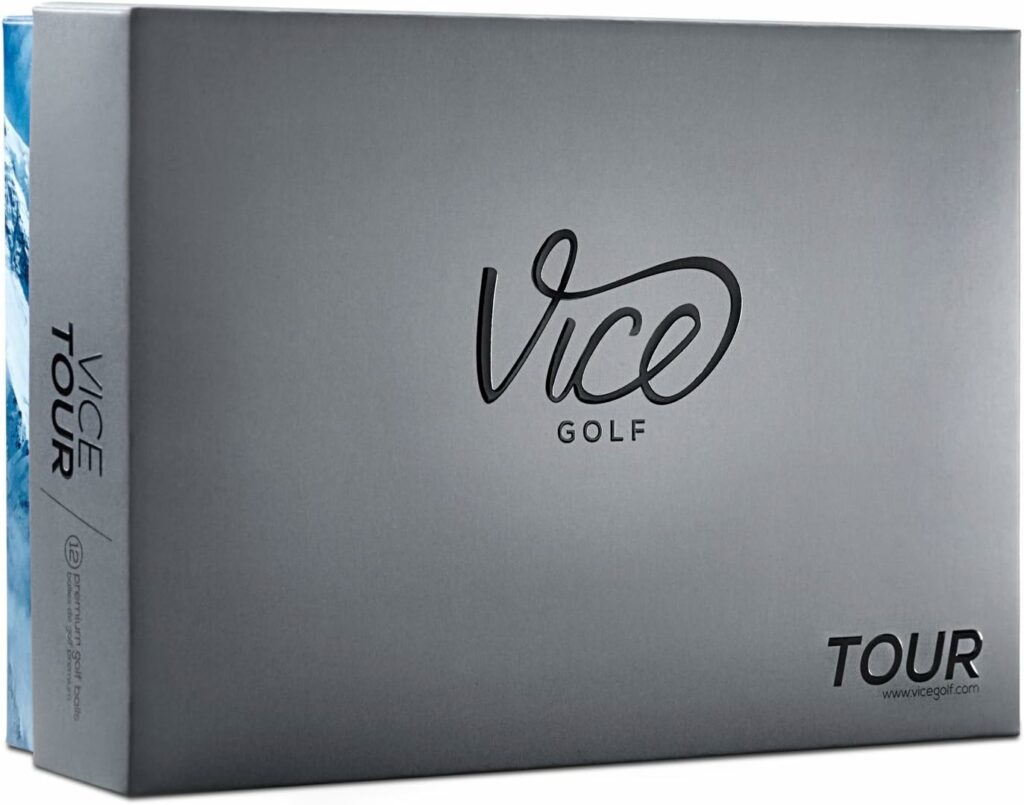
Vice Tour
The story of Vice is pretty inspiring.
Companies are starting to prove it’s not actually that hard to make a golf ball.
What is hard is making a great golf ball and maintaining its greatness with consistency again and again.
Vice is doing the latter.
All of their balls compete with the ‘big boys’ of the golf ball industry and Vice stays with them step-for-step.
The Vice Tour is no exception.
If you haven’t played one, or any Vice for that matter, now is the time to try.
Not only is it one of the best beginner golf balls overall, it’s made by the company with the most affordable price for balls anywhere.
Seriously, if you haven’t played a Vice golf ball, what are you waiting for?
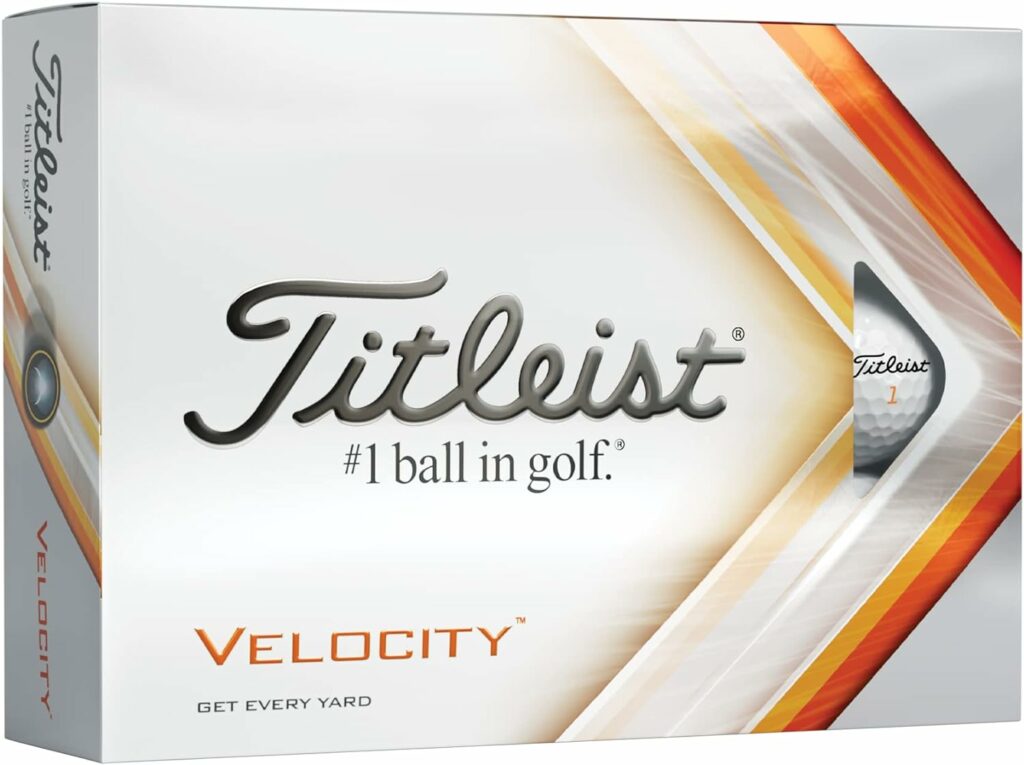
Titleist Velocity
If money is a concern, or if you lose enough balls to make it a concern, here you go.
The Titleist Velocity.
The trust is in its maker.
Nothing flashy, just a soft low-spin performance ball that will let you go out and have a great time on the course.
Sometimes that’s all you need.
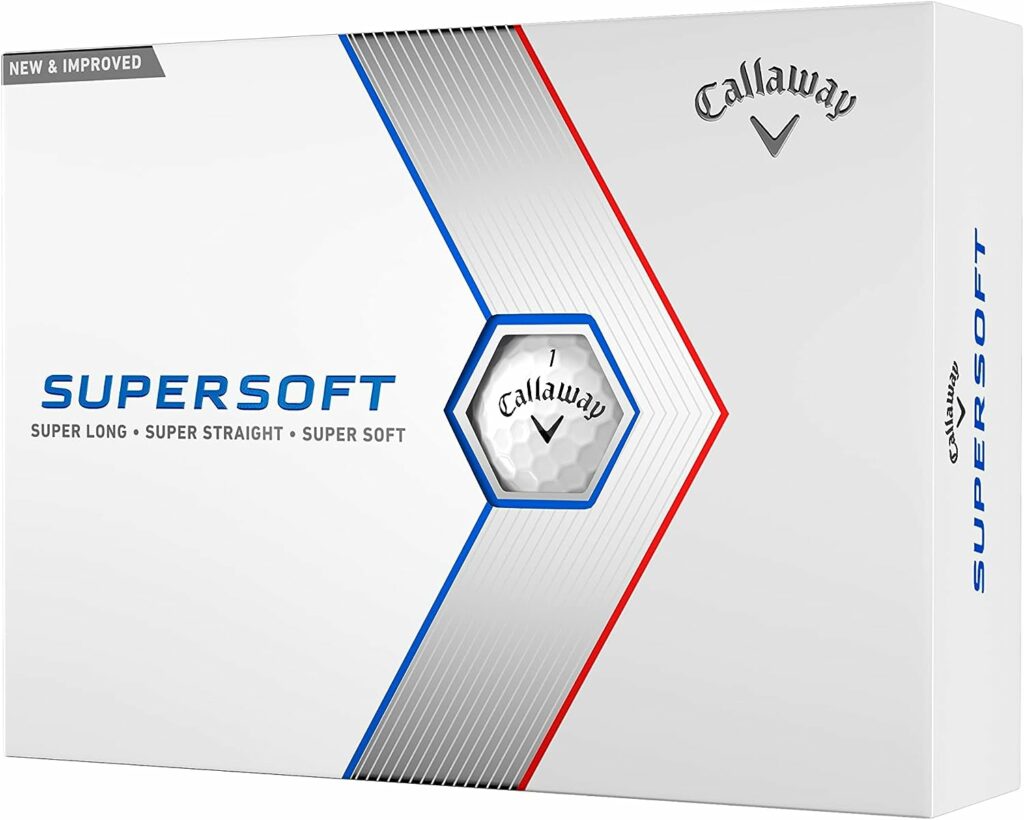
Callaway Supersoft
The sales pitch is in the name.
This ball is super soft. Literally.
The Callaway Chrome Soft golf ball might have been the one that started the revolution, but the Supersoft is one of the softest golf balls money can buy.
And this puts it in the debate for the best golf ball for beginner golfers.
Which also helps keep spin down and minimize left and right misses.
If you are in a pinch for cash but are also concerned about keeping balls in play, look no further.
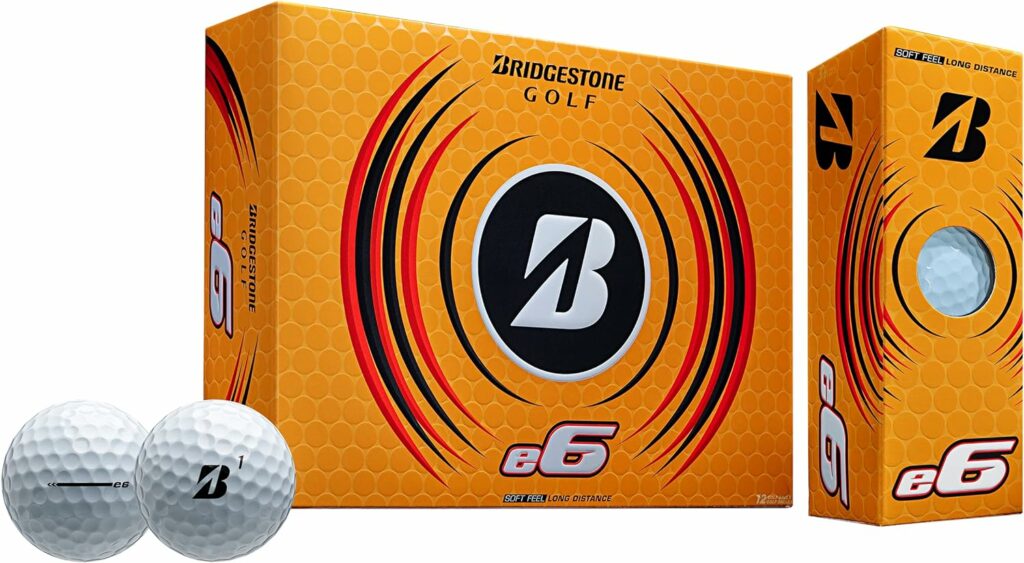
Bridgestone e6
The longest-running ball in Bridgestone’s lineup, the e6 sees its fandom continue.
It’s long been the most popular ball Bridgestone sells and seemingly for good reason.
It prides itself on being one of the softest golf balls on the market which makes it feel as good as anything you’ve ever hit with a golf club.
The incredibly soft feel and low compression rating also aid in the e6 being one of the lowest spinning balls off the driver.
As a beginner, there’s really no better combo.
Low spin to keep your ball in play and a soft feel to make you keep coming back for more.
Best Golf Ball for Beginner with a Little Extra Cash
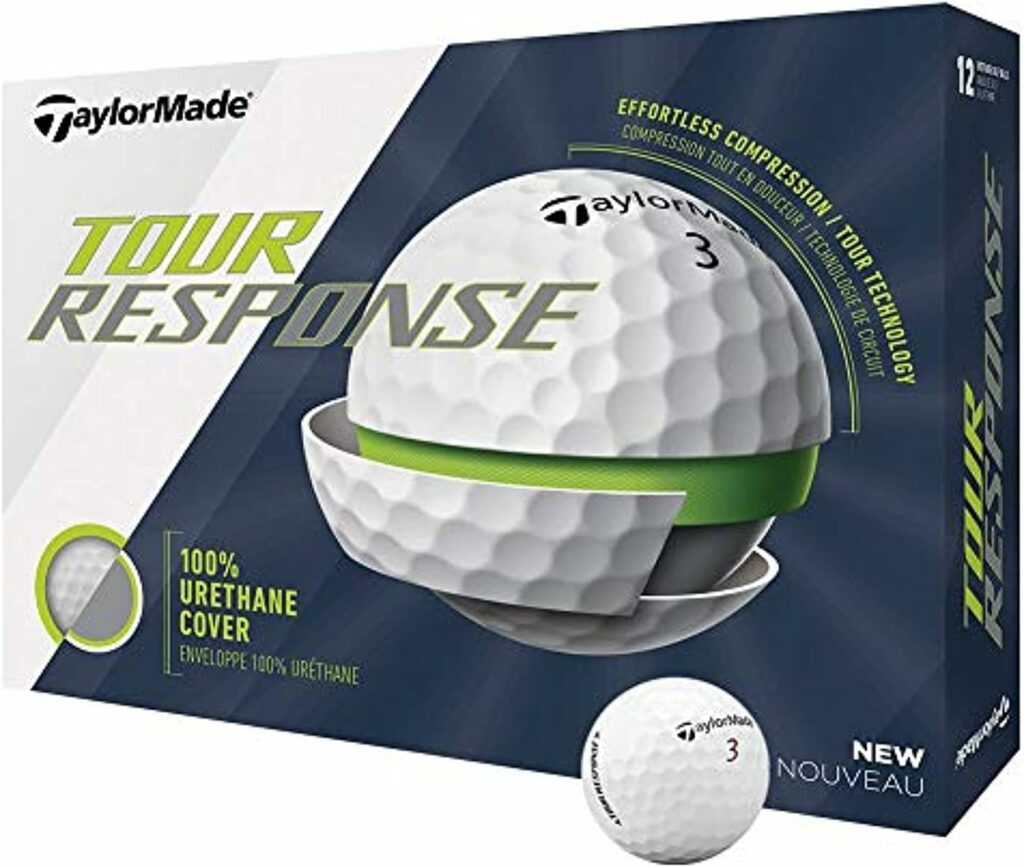
Taylormade Tour Response
Do you aim left and your ball ends up in another dimension?
The Tour Response can help.
Taylormade’s Tour Response is at the top of its class when it comes to being the best golf ball for beginner golfers.
Its urethane cover will give you enough feel and spin around the green, but its inner layers will give you the relief we beginners need on longer shots.
It will also give you a few extra yards on iron shots which can help on forced carries over bunkers or water.
Though it has the word ‘Tour’ in the name, don’t be confused. This is NOT a ball reserved for the elites of the game.
Quite the contrary, if you struggle with spraying balls left and right, the Tour Response is a ball you need to try.
It also comes in a wide variety of color options if that is your thing.
Titleist Tour Soft
The Tour Soft is exactly what the name says. Soft.
If you’re a beginner that’s important because it gives you the relief you need when shots start going offline.
The goal of this golf ball is not to be the most elite-performance golf ball you can buy, and that’s ok.
When you are more concerned with making solid contact, having the latest and greatest golf ball performance isn’t always necessary.
Just as said before, the most important part is playing the same type of golf ball on every shot.
And when that golf ball has a Titleist script plastered on the side of it, you can trust that you are in good hands.
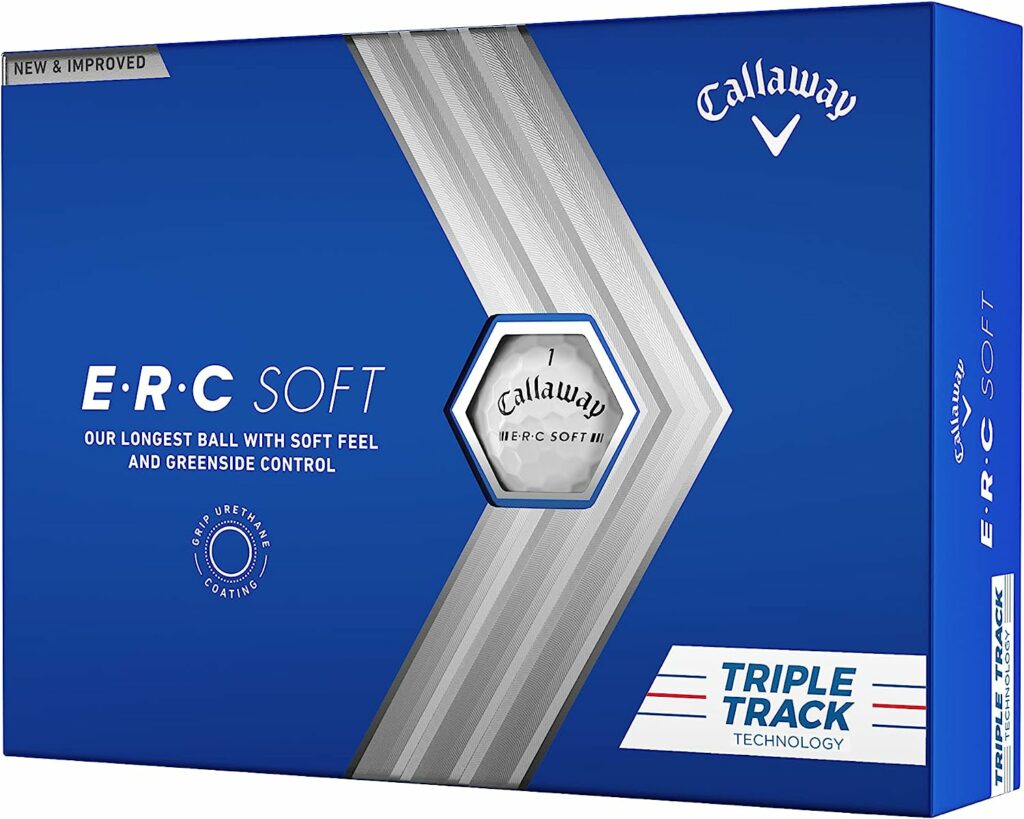
Callaway ERC Soft
The ERC Soft is still one of my favorite golf balls when I’m having a bad day and need a little extra help finding the fairway.
Its Triple Track also pairs nicely with my Odyssey putter though, so maybe I’m biased.
Callaway has completely revamped the ERC Soft to make it a perfect golf ball for beginner golfers.
Its cover is made from a hybrid of urethane and ionomer which provides a much higher spin rate on short game shots than previous models.
Combine that with its low compression core and you’ve got a good billing for the jack of all trades.
It still maintains a low spin rate for longer shots that help with forgiveness, but its new cover has really put it in the upper class of beginner golf balls.
A great ball from Callaway as they continue to raise their golf ball game.
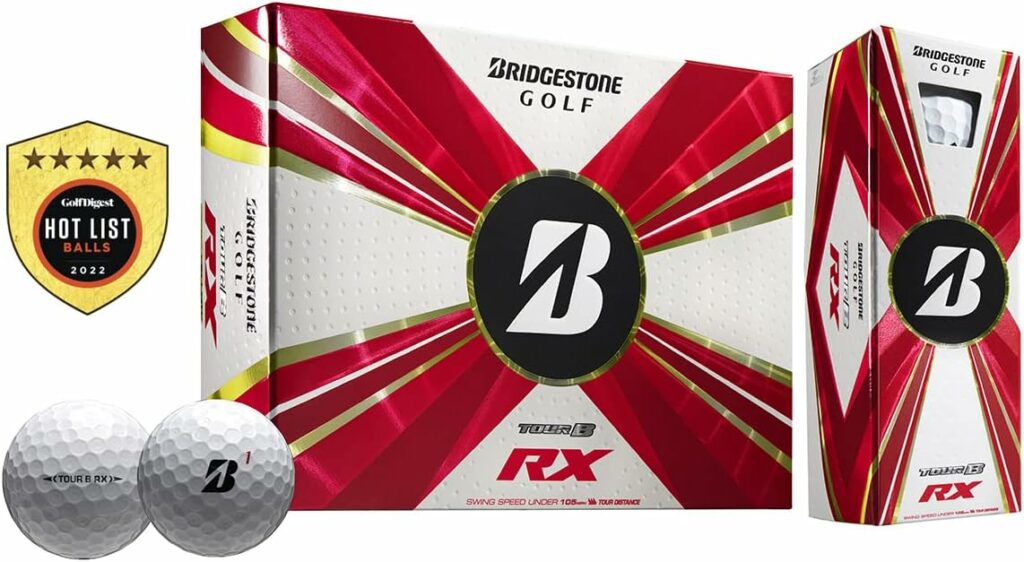
Bridgestone Tour B RX
I’m starting to sense a theme of brands selling all these balls as “Tour” balls.
I promise it’s a farce.
The Tour B RX is a fascinating blend of spin and distance.
Marketed as a golf ball that’s better for slower swing speeds, the Tour B RX will still offer a good amount of forgiveness no matter what your swing speed is.
Additionally, it’s the best distance golf ball on this list too.
Talk about a win-win.
For how soft it is, it actually has a little more driver spin than the other balls on this list, but it is among the elite in minimizing wayward shots on irons.
Best Golf Ball for Beginner: Final Thoughts
Trying to find the best golf ball for beginner golfers is like the pushing-off point to a maiden voyage.
It’s extremely nerve-racking, yet filled with excitement and anticipation.
It can be the launching point of a lifetime filled with chasing lower scores and just as many frustrations along the way.
But fear not, choosing the right golf ball doesn’t have to be one of those frustrating moments.
Golf is hard enough, we don’t need to make it any harder.
All the balls on this list can help you with that.
I would always recommend trying them against each other and seeing which one you like better, but any of them is going to help you start seeing results in your game.
The most important part is picking one and sticking with it until you start seeing your tendencies shining through. And they will shine through.
If you want to see our list of how these golf balls compare to the rest of the ball market, see our full list here.



Leave a Reply